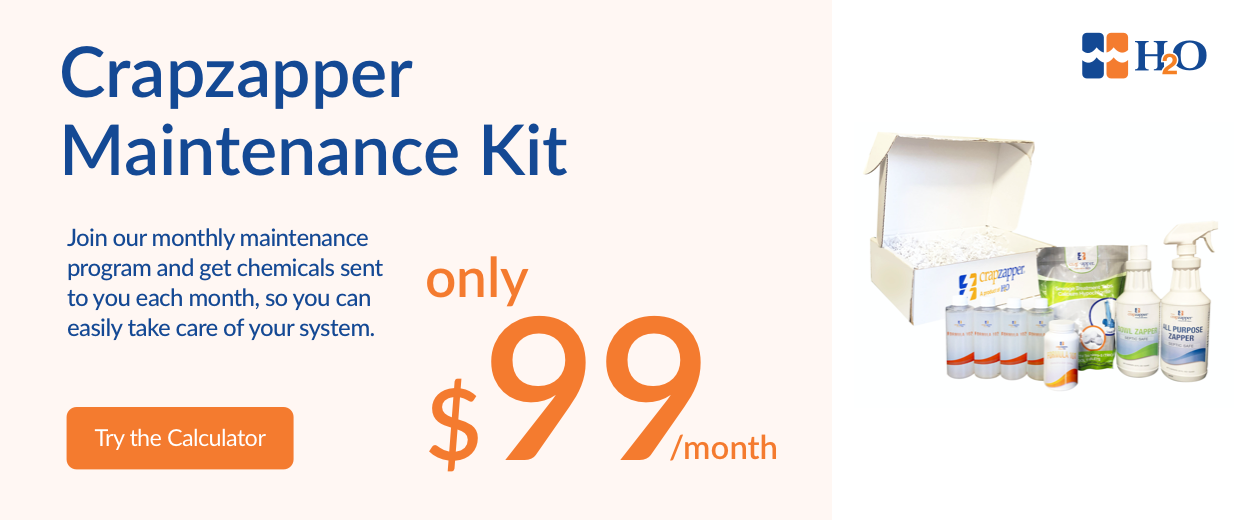
When you’re working on a boat or rig over a period of several days, there’s no getting around it: You’ll be using the facilities several times and, well, if your marine sanitation device isn’t maintained properly, that can result in less-than-aromatic situations.
It might seem like a small thing, but an unclean or stinky boat bathroom can definitely affect your quality of life. More than that, a perpetually unpleasant smell coming from your boat’s bathroom can signal a larger issue with your marine sanitation device or other systems aboard your vessel. What might be the root cause of this issue? Is there anything you can do about it?
In this blog post, we’ll go over common problems that may arise with your marine sanitation device, as well as the ways you can work to make the problem (and the smell) disappear.
When Your Bathroom Starts to Stink, It Might Signal a Larger Issue with Your Marine Sanitation Device
In your home, when your bathroom begins to smell bad, you might take a moment to clean out the fixtures and then spray a few wafts of air freshener to help improve the ambience in your home.
This will not work for your marine sanitation device or the bathroom on your boat. Ignoring the problem or covering it up with aerosols won’t help with the issue in the long term.
Whether your restroom or the unit itself smells, it’s likely related to a lack of proper routine maintenance. It’s important to take care of your sanitation systems frequently—not just so you don’t have to experience offensive aromas, but also for the health of everyone aboard your vessel. If you ignore signs of a problem with your marine sanitation device, the issue could worsen over time. This might result in extremely costly repairs you could have easily avoided.
Common Problems That Lead to Stinky Marine Bathrooms
Fortunately, when you’re working to diagnose your bathroom’s bad smells, there are a few likely culprits at play. Let’s go through some common issues that you might be able to diagnose, as well as a few easy-to-implement fixes that could resolve your stinky bathroom in a flash.
Make sure your water treatment system is running smoothly.
Your marine sanitation device depends on a constant flow of sewage materials through several holding tanks. If any of the valves are clogged, the waste may not be moving through the tanks quickly enough (or at all). This can result in a stagnant mess or large backup stacks of sludge at the bottom of one of your tanks—a perfect scenario for awful aromas. Locating the source of the clog and working to get the system moving again should naturally begin to clean out your device.
Make sure that you’re not overloading the system.
Every marine sanitation device has a load limit. This simply refers to the number of people who will be using your vessel’s bathroom on a daily basis.
If you overload or surge the system with too much waste too quickly, you will experience unpleasant side effects. After all, properly treating sewage takes some time. To avoid this issue, check to see what the recommended load is for your marine sanitation device. (You can likely find this in the manufacturer’s guide for your product.) If you constantly overload your system, you might need to consider an upgrade.
Make sure that you’re dosing the system correctly.
Powdered aerobic bacteria, bacterial enhancer, and calcium hypochlorite tablets: You’ll need to be dosing your marine sanitation device with these three chemicals in order to get it to work correctly. Otherwise, the sewage in your system will sit, decomposing and becoming septic, without being processed the way it should.
Make sure that you’re using the manufacturer-recommended chemicals to dose your system, and ensure that you’re following a good maintenance schedule for your devices. Ultimately, if you’re not using your system in the way it was intended to be used, it’s not going to work properly—and it’ll let you know with overwhelming unpleasant smells.
Easy solutions you may be able to implement.
Avoid antibacterial cleaners (or bleach).
A delicate balance of bacterial activity is the driving force of your marine sanitation device. These bacteria need oxygen to stay alive so they can process the waste. They also need a nontoxic atmosphere in order to keep your system running.
If you’ve ever poured bleach or antibacterial products down your toilet at home as a quick fix, you might be tempted to do so here. This isn’t a good idea. Doing so will kill the bacteria and completely stop the flow of your device in its tracks.
In other words, the bad smell will definitely get worse. Be sure to keep all harsh chemicals, besides those required for routine maintenance, far away from your marine sanitation device.
Rinse and clean the hoses, tank, and bowl (all components of the head) with fresh, clean water.
This solution likely feels like a no-brainer: Simply make sure that all of the easily reachable parts of your boat’s bathroom are fresh and clean. An unpleasant aroma can be caused by several issues.
An unclean restroom is one of the easiest to find and fix, so it’s a good place to start eliminating potential causes. To do this, you’ll need to shut off the water to your restroom, make sure that everyone aboard is aware that you will be performing maintenance, and then carefully disconnect each part of your vessel’s head. Rinse everything out, reassemble, and see over the next few days if that had any effect on the atmosphere in your restroom.
Check, clean, or replace the valves in your system.
The valves in your system represent smaller gateways that experience large amounts of (often harsh) flow-through. As such, you might expect these valves to have higher amounts of corrosion. They’re also excellent sites for clogging to happen, because they tend to be narrower than the large holding tanks they connect.
Checking your system’s valves may be a work-intensive solution, but it’s a good way to ensure that your marine sanitation device is squeaky-clean. There are three specific valves you may wish to check. Each of these is small and relatively inexpensive, but crucial to the overall function of your marine sanitation device:
- Examine the joker valve to look for corrosion. A joker valve (sometimes called a duckbill valve due to its shape) lets water and other materials go through it to properly clear your vessel’s head. If it isn’t clean or it’s wearing out, sewage might flow back into your marine toilet.
- Consider replacing the flapper valve. Your system’s flapper valve is a part that sits close to your marine toilet’s bowl. In order to let waste flow from the bowl, it has to open properly (and close firmly afterward, to avoid backflow and unpleasant aromas).
- Check the inlet valve to see if it needs cleaning. The inlet or intake valve helps run water through your system. It should help refresh the various pipes and valves, so if that’s not happening, it’s a good idea to check and see whether the inlet valve is working properly.
Remove heavy scale with vinegar or a 10% muriatic acid solution.
What is heavy scale?
Heads that are consistently flushed with saltwater accumulate calcium deposits (known as “scale”) in the various hoses and channels that make up your sewage system. These types of deposits make it harder to flush and use your system. They may even cause sewage to flow back up into your vessel’s head.
Ultimately, scale will lead to blockage, and the associated bad smells. If you think you might have a scale buildup, use vinegar (for lighter cases) or a 10% muriatic acid solution (for more severe cases) to dissolve accumulated deposits.
With either chemical, make sure that you cover your eyes and hands to keep safe. After you have dosed the system with either of these acidic solutions, run fresh water through your device to flush the system completely.
Reach Out to H2O for More Helpful Support Regarding Your Marine Sanitation Device
If you have tried all of the above workarounds and your bathroom still smells bad, it might be time to talk to the pros. H2O proudly stands behind its marine sanitation devices and other water treatment systems. We’re also on hand for reliable support when you need it most. When you need help diagnosing a stinky bathroom or fixing something and you’d rather not DIY, give H2O a call.

